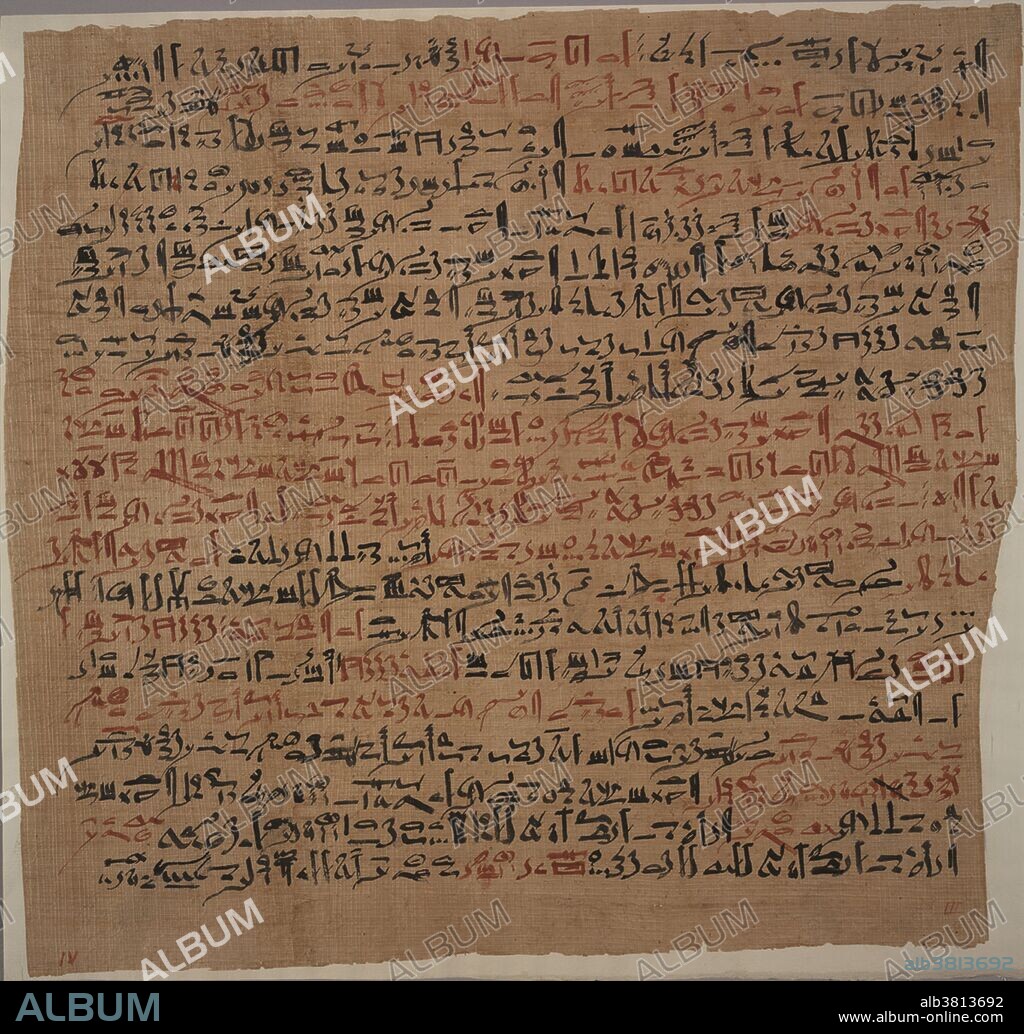alb3813692
Edwin Smith Papyrus, 1500 BC

|
Zu einem anderen Lightbox hinzufügen |
|
Zu einem anderen Lightbox hinzufügen |



Haben Sie bereits ein Konto? Anmelden
Sie haben kein Konto? Registrieren
Dieses Bild kaufen

Titel:
Edwin Smith Papyrus, 1500 BC
Untertitel:
Siehe automatische Übersetzung
Recto column 4. The Edwin Smith Papyrus, the world's oldest surviving surgical text, was written in Egyptian hieratic script around circa 1500 BC, but probably based on material from a thousand years earlier. The papyrus is a textbook on trauma surgery, and describes anatomical observations and the examination, diagnosis, treatment, and prognosis of numerous injuries in exquisite detail. American archeologist Edwin Smith discovered the papyrus in Egypt in the 1860s, and his daughter donated the papyrus to the New York Historical Society after his death. It eventually made its way to the Library of the New York Academy of Medicine. From 2005 through 2006, it was on exhibition at the Metropolitan Museum of Art in New York. James P. Allen, curator of Egyptian Art at the museum, published a new translation of the work, coincident with the exhibition. This was the first complete English translation since Breasted's in 1930. This translation offers a more modern understanding of hieratic and medicine. The recto and verso are respectively the front and back sides of a leaf of paper in a bound item, and find their origins in the use of papyrus. Papyrus, the earliest form of paper, was used to make books in Egypt, Greece and Rome. The text is attributed by some to Imhotep, an architect, high priest, and physician of the Old Kingdom, 3000-2500 BC.
Bildnachweis:
Album / NLM/Science Source
Freigaben (Releases):
Model: Nein - Eigentum: Nein
Rechtefragen?
Rechtefragen?
Bildgröße:
3300 x 3163 px | 29.9 MB
Druckgröße:
27.9 x 26.8 cm | 11.0 x 10.5 in (300 dpi)
Schlüsselwörter:
 Pinterest
Pinterest Twitter
Twitter Facebook
Facebook Link kopieren
Link kopieren Email
Email
